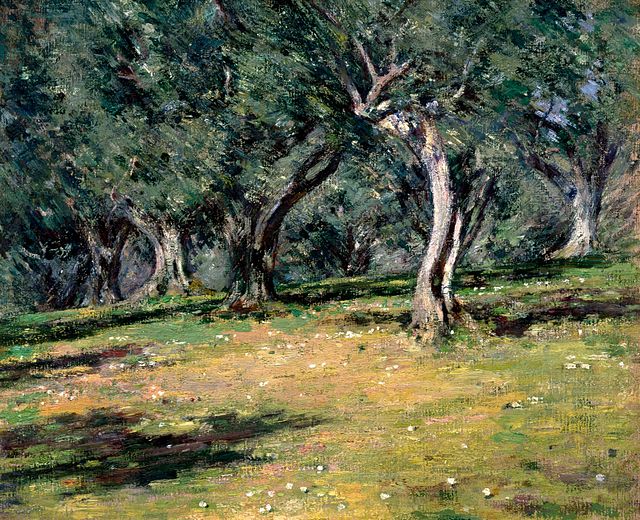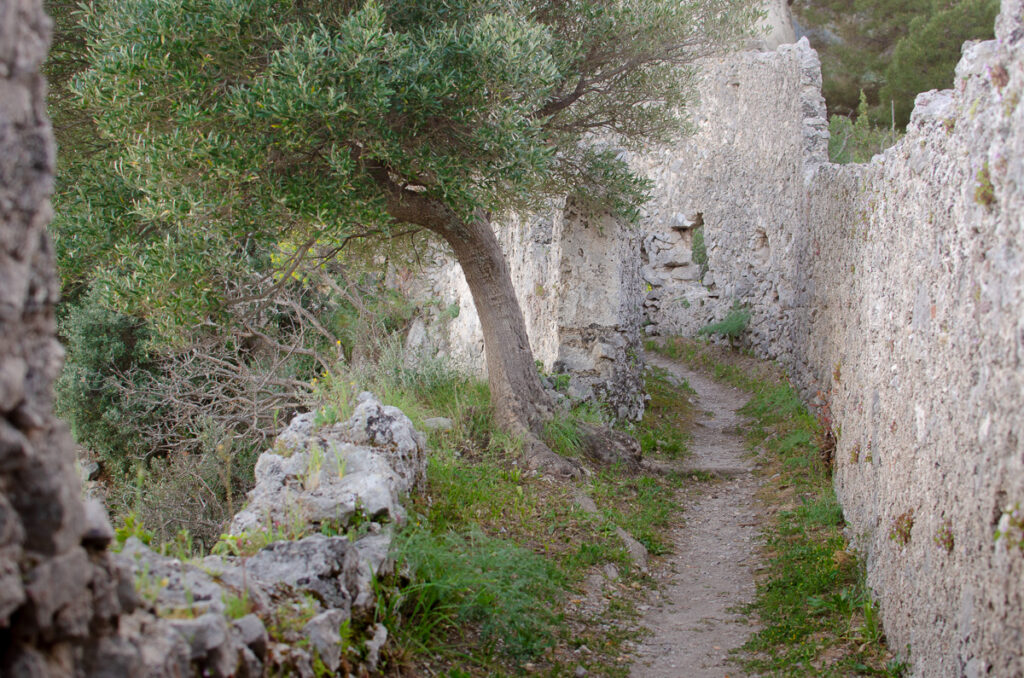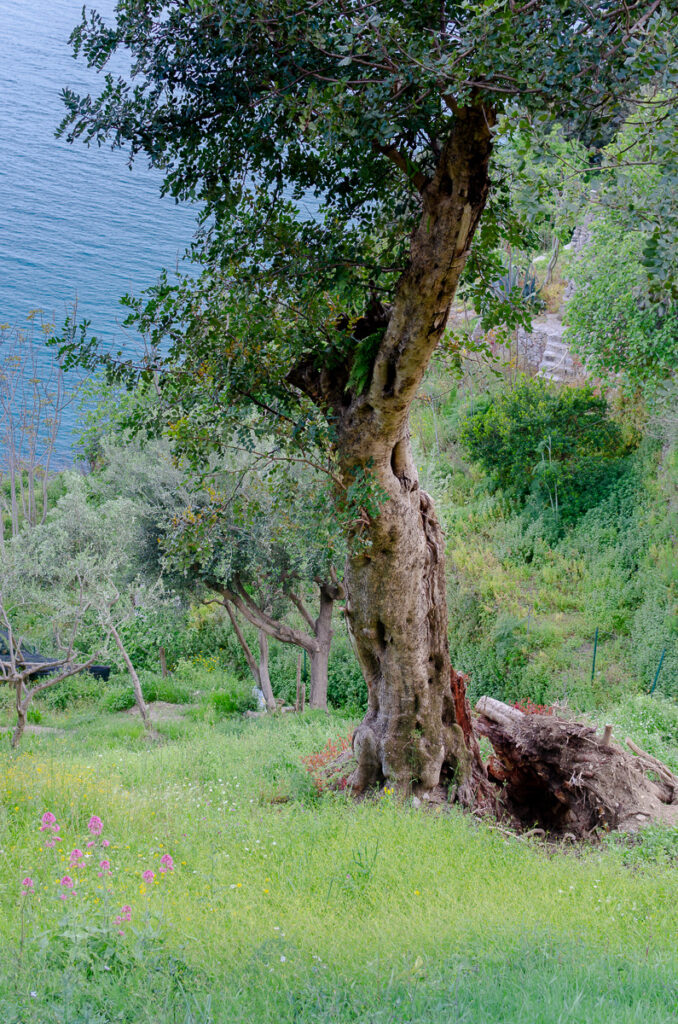5 Iconic Trees of the Amalfi Coast’s Landscape and Terraces
The Amalfi Coast is a stunning stretch of coastline in Southern Italy.
This shore is famous for its dramatic topography: Here steep hills are plunging into the Tyrrhenian Sea.
The coast is characterised by a terraced landscape. Lemon and olive groves and vineyards are commonly cultivated here in Mediterranean Terrace systems.
These narrow gardens adorn the rugged mountains and hillsides, curling into the deep valleys. Built over centuries, they are a testament to the hard work and dedication of the locals who inhabit this area. Therefore, the agricultural landscape is an essential part of the region’s cultural heritage.
According to UNESCO, the universal value of the Amalfi Coast stems not from its natural state but rather from the human efforts to adapt it.
If you’re planning to explore the Amalfi Coast on foot, you’ll be surrounded by an incredible variety of trees. In this guide, I’ll introduce you to some of the most common trees you’ll encounter on your wander.
1. The Olive (Olea europaea)
The Olive tree, or as the Italians say, Ulivo or Olivo is a very precious plant of the Mediterranean region.
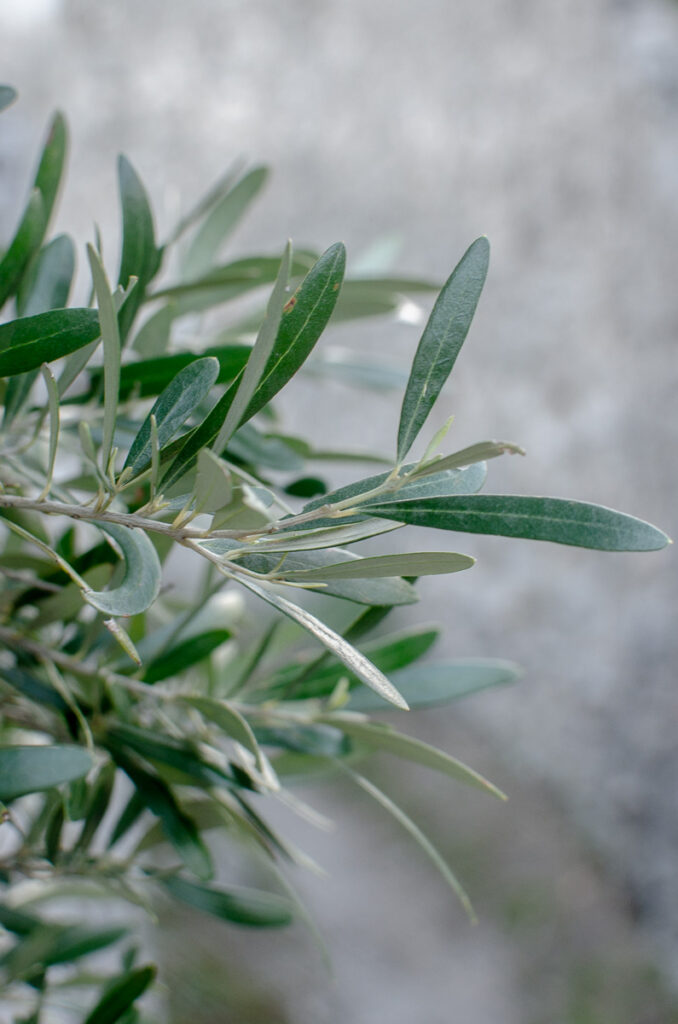
Let’s dive into what makes these trees so special:
Olive trees dominate the agricultural landscape and are common in the Mediterranean area. One of the oldest olive trees in the world is estimated to be more than 2000 years old. The olive tree appears in Greek mythology, in the Bible, and in the Quran too.
Here in the Amalfi Coast, olive groves are planted on narrow terraces. They create a picturesque landscape. Olives are evergreen trees with twisted trunks, silvery foliage, and an open crown. They bloom in April and May, featuring small, clustered white flowers with a yellow center.
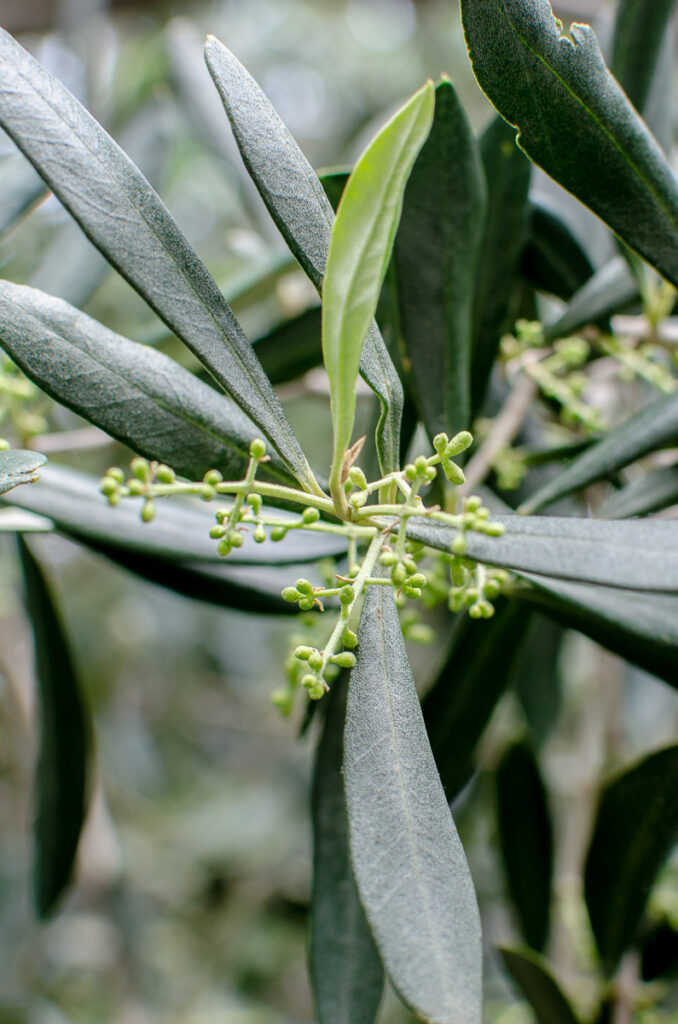
The small fruits are typically harvested between October and December, with nets placed under the plants to catch the falling fruit.
Appearances in the Bible: In the story of Noah’s ark, a dove returns with an olive branch, signaling the end of the flood. Also, the Mount of Olives, an important site in the Bible where Jesus went to pray before his crucifixion. Olive trees are essential in Mediterranean culture.
Olive arbors are so inviting. You can step into a canvas-like scenery, particularly in the midst of spring and summer. Imagine the soft green meadow under the trees, dotted with yellow wildflowers and red poppies. The twisted, gnarled, and knotted trunks of the trees and the silvery shimmer of their foliage, create a mesmerising sight under the warm sunlight.
Book your Olive Oil tasting Experience or a full-day Olive Tour here.
If you’re a fan of Italian cuisine, then you know that olive oil is the holy grail of ingredients. At a frantoio (olive oil mill), olives are crushed and pressed to produce high-quality extra-virgin olive oil. It’s not just delicious but also a healthy oil. Olive oil is rich in antioxidants and omega-3.
2. The Lemon Tree (Citrus Lemon)
Lemon trees are the iconic symbol of the Amalfi Coast.

The region grows many different types of lemons, but the local variation “sfusato amalfitano” is the most common here.
Another typical citrus fruit present on the Amalfi Coast and Sorrento Peninsula are the “cedri” (Citrus Medica or Citron in its common name). They grow big and have bumpy, irregular skin. The fruit can resemble a giant rough-looking lemon and can weigh around 2 to 3 kilograms or even more. Citrus Medica is one of the oldest known citrus fruits and is believed to be the ancestor of many of the citrus fruits that we know today.
Lemons have significant cultural importance, particularly in Jewish celebrations. The Citrus Medica, also known as the Etrog, is used in the Jewish holiday of Sukkot.
Lemons are highly popular ingredients in Amalfitan cuisine and form the foundation of local gastronomy. Their use on the Amalfi Coast is not limited to desserts like “Delizia al limone” (Lemon Delight) but is also present in many pasta dishes and you can even find them on pizza!
Tip: If you like lemon jam, you should try marmalade made from “Cedri” (Citron). It is less common than lemon jam, but some smaller, traditional shops on the Amalfi Coast are perfect places to find such a delicacy.
Click here to know more about the Lemon Path in Minori, Amalfi Coast.
3. The Carob tree (Ceratonia siliqua)
The Carob is native to the Mediterranean area. You can find it commonly in the Amalfi Coast, either cultivated or growing spontaneously.
If you’re curious about what a carob tree looks like: It is a slow-growing, evergreen tree with a dense crown of dark green foliage. The leaves of the carob tree are pinnate, which means they are composed of several leaflets. Those leaflets then are arranged on either side of a central stem. The carob tree produces a long, dark brown pod. The pod can grow up to 30 cm in length. They are harvested from late August to September.
One interesting fact about the Carob tree: The Italian word “carato,” which means “fruit of the Carob,” is the origin of the term “carat.” This is because of the uniform weight of the seeds, which people used as a standard in the past. Diamond traders used to compare the weight of a diamond to the seeds of the Carob tree, as they have a standard, identical weight of 0.2 grams each.
Today, Carob beans are mostly known as a chocolate substitute. They have many other uses as well. Carob is considered a “forgotten fruit” and is currently being rediscovered as a superfood. Due to its high nutritional value and other benefits, it’s a valuable plant. Carob cultivations are commonly found in Sicily.
The Carob tree has good drought tolerance, and the beans are used to feed horses. It is a fascinating tree with a rich history and many uses.
It is also known as “St. John’s Bread” or Lucust Bean. According to the Bible, the carob tree was eaten daily by St. John the Baptist during his time in the wilderness. Reference in the Bible: “His food was locusts and wild honey” (Matthew 3:4).
The carob is well adapted to arid and dry climates and has been cultivated for centuries in the Holy Land. The tree’s ability to tolerate drought and high temperatures makes it a valuable crop in areas where other plants may struggle to survive. Carob plants are a common sight in many parts of Israel.
4. The Fig (Ficus carica)
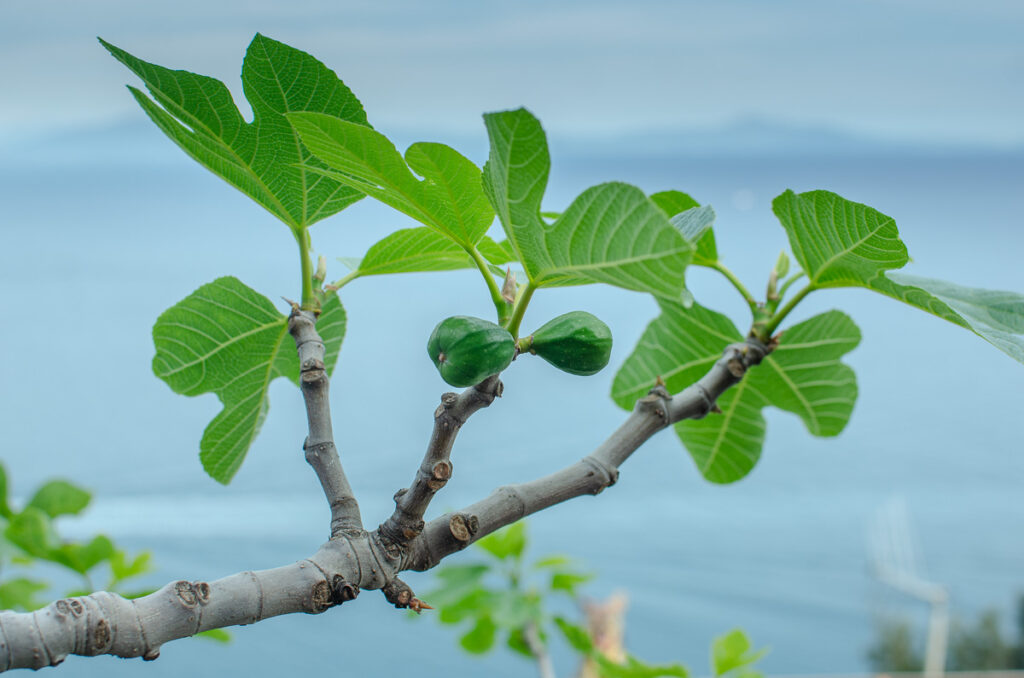
Fig is another tree with biblical significance and a common sight in southern Italy. You will find it often along the roads of the Amalfi Coast. The fig tree has broad leaves that provide ample shade in hot summer months. Figs ripen in the late summer and early fall.
There are hundreds of varieties of fig. The white fig of Cilento is a protected geographical indication (IGP) product. Cilento region is located across the Bay of Salerno a Coastal region neighbor of the Amalfi Coast.
The region is well known for its high-quality figs. There is a typical sweet made with figs and chocolate, typical to Cilento. It is like a bonbon made of dry figs, covered with chocolate.
Figs are widely used in Italian gastronomy, and you can find them in various forms, including jams and as ingredients in sweets and salads.
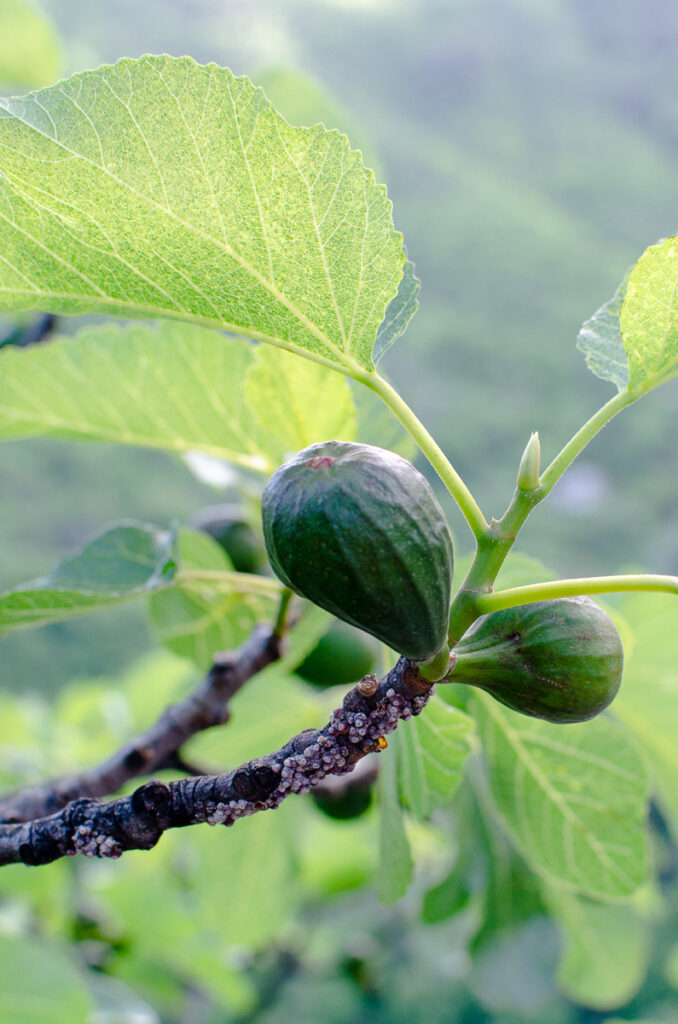
5.The Marittime Pine (Pinus pinaster)
The Maritime pine is the star of Italian landscape paintings: Tall, majestic, and fast-growing. It’s native to the western Mediterranean Sea, and It’s not uncommon for it to reach a height of 40 meters. That’s like the height of a 13-story building.
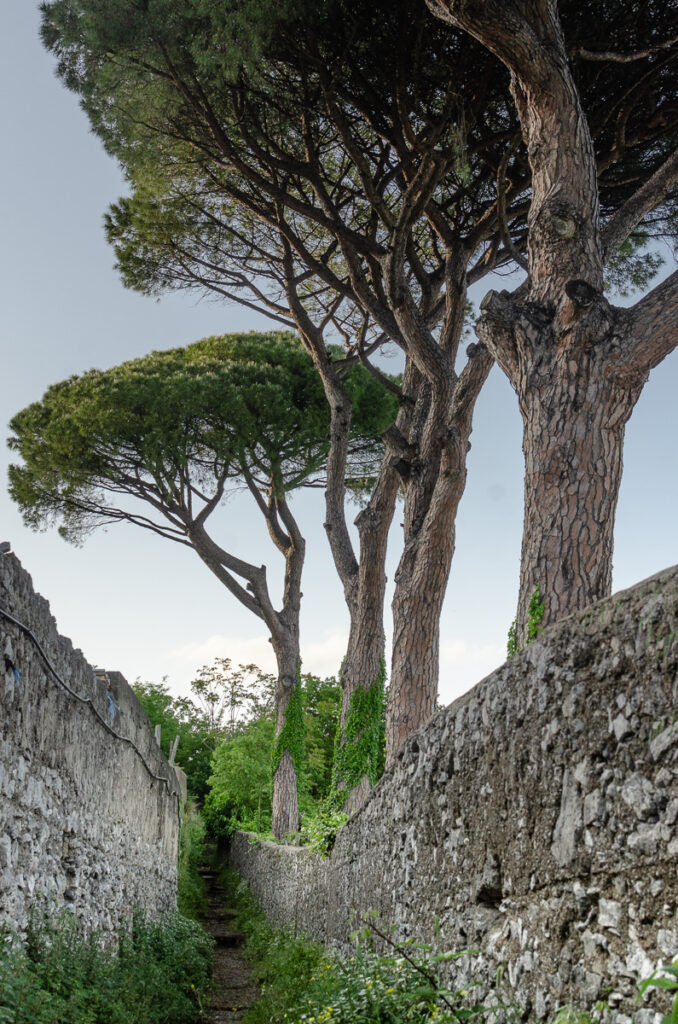
The Maritime pine has been immortalised in some famous paintings. One example is “La Pineta di Tombolo” by Italian artist Giovanni Fattori. Henri Matisse also painted “The Large Pine,” featuring a lone Maritime pine standing tall against a bright blue sky.
Did you know that the Maritime pine seed is edible? The seed is about 1 cm long and has a deep nutty flavour rich in oil. That’s why Italian chefs love to use pine seeds in their pestos and desserts. Have you ever tried the “Torta della Nonna” (Grandmother’s cake)? It’s a classic Italian dessert with pine seeds sprinkled on top – definitely worth a try.
The Stone Pines (Pinus pinea) and Maritime Pines are really the stars of the Italian scenery. The most famous one used to be in Napoli. Today the most well known pine is in Ravello.
The Pine of Napoli
There was a majestic pine in Posillipo, that you could compose with the Vesuvius in the background, but it’s gone.
When I lived in Napoli, my side hustle was stock photography. I used to go out to capture classic and iconic views in Napoli. Often, I asked my local friends for tips on the best spots. All of them mentioned the pine with nostalgia. Sadly, it was cut down in 1984. No Neapolitan will be emotionless mentioning the Pine Tree of Posillipo. Today, only remembered in the local folklore. And referred to just as The Pine ( Il Pino). Still to be found on many postcards of Napoli.
The Ravello Tree
Nowadays, the “Ravello Tree” is the most famous and most photographed pine tree in Italy.
Even if you don’t know its location on the Amalfi Coast in Ravello, you are probably familiar with this picture already.
To capture this iconic shot, visit the gardens of Villa Rufolo in Ravello. The tree isn’t located in the garden, but just right under. From there, you’ll have the perfect view.

